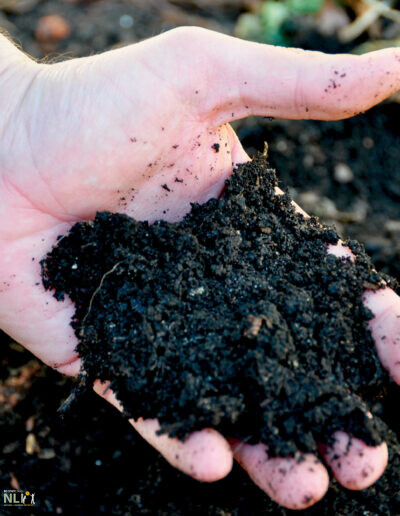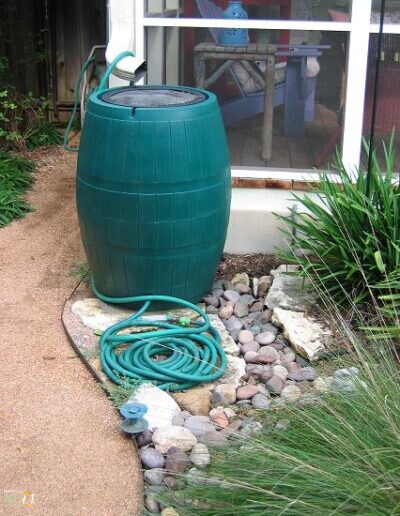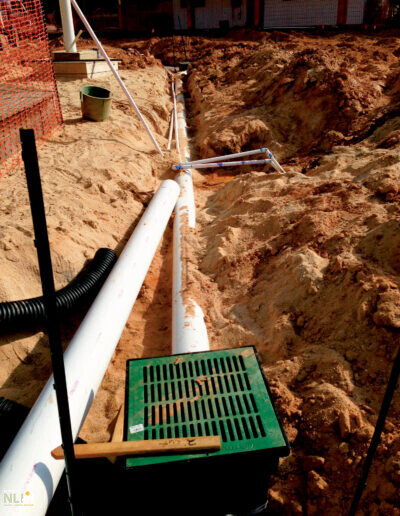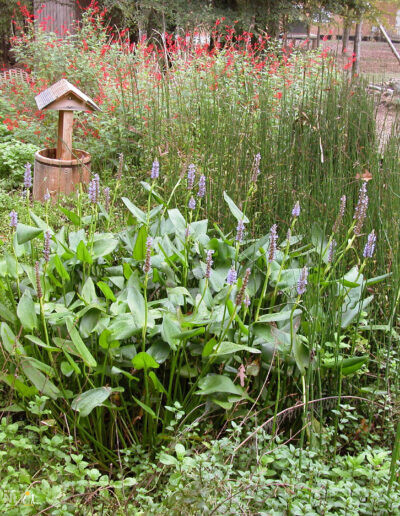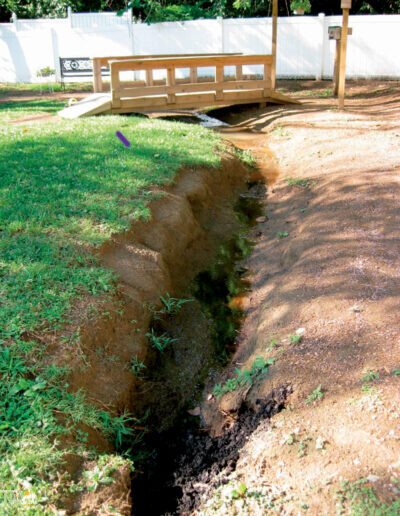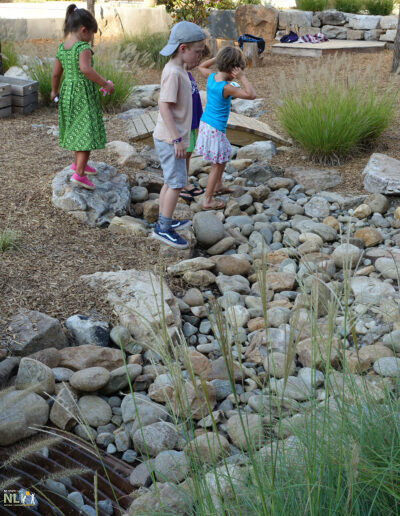45. Stormwater Management
When soils are compacted, comprised of heavy clay, and/or drainage is insufficient, excessive water may gather in the outdoor learning environment (OLE) after a rain storm or during rapid snow-melt, making use impossible. This InfoSheet describes management approaches to reduce or eliminate such problems.
Stormwater Management Solutions
Consultation. Drainage issues are common. To solve them effectively often involves professional help. Consulting a landscape architect or engineer is an advisable first step.
Amend soil. Clay soils easily compact, which causes poor drainage. If encountering a drainage problem in a small, specific area on site due to clay soils, amend soil to improve drainage. Aerate soil and add 2–3 inches of organic material, such as compost or mulch, working it in with a garden fork. Repeat this process twice a year to add structure to soil and improve drainage.
Use a rain barrel. A rain barrel is a container that captures and stores rainwater drainage from a roof. Barrels usually range from 50–80 gallons and have a spigot for filling watering cans and a connection for a soaker hose. Installing a rain barrel at childcare centers will reduce water bills, minimize storm-water run-off, and model stewardship behaviors for the children that use it.
Install drainage system. There are many different types of drainage systems that meet a wide spectrum of site-specific needs, including visibility, amount of water, and cost considerations. Three common and cost-effective drainage systems are outlined below.
- A French drain is a sloped trench filled with gravel. A perforated pipe is placed at the bottom of the trench, which carries ground water away from the site and can empty into a designated drainage area. They are best used in soil that is prone to frequent saturation from rain or flooding. French drains are susceptible to frequent clogging, and roots from plants often displace and damage the perforated piping. French drains may need to be replaced every few years and require more maintenance than other drainage systems.
- A surface drainage system typically includes 9-by-9-inch or 12-by-12 inch area drains and 4-inch flexible PVC pipe. The system is used to collect water at ground level and channel it away from poorly draining areas.
- A channel drain is a type of surface drain that collects water in a trough and then directs it elsewhere. Channel drains are long, thin, and typically have a grated surface. They can be installed in a number of different environments, including turf grass, concrete, and gravel.
Regrade landscape surfaces. Landscape regrading changes the ground plane to direct the flow of water across a given site. Landscape features called “berms” and “swales” are used to channel water toward or away from a desired area. While regrading is often an expensive process, a regraded site will divert unlimited amounts of water and requires no maintenance, except for erosion management.
NATURALIZED DRAINAGE SOLUTIONS
Rain gardens. A rain garden is a designed low-point in the landscape that collects rain water from a drainage system and allows it to soak into the ground. Planted with wet-loving grasses and flowering perennials, rain gardens can be a cost effective and beautiful way to absorb excess water. Rain gardens can also help filter out pollutants in runoff and provide food and shelter for butterflies, song birds, and other wildlife.
Dry stream beds. Dry stream beds are swale-like depressions lined with smooth river stones. They convey runoff from water play activities, rain events, or snow melt. In addition to stormwater management, dry stream beds create excellent play settings. When combined with a bridge and hardy grasses, a dry stream bed will provide endless opportunities for play in an OLE.
Resources:
- For more information on dry stream beds, see Infosheet: Dry Stream Beds
RAIN GARDEN PLANTS
Asclepias incarnata, Swamp milkweed
Calamagrostis × acutiflora, ‘Karl Foerster’, Feather reed grass
Callicarpa americana, American beautyberry
Cephalanthus occidentalis, Buttonbush
Chasmanthium latifolium, River oats
Juncus effusus, Common rush
Muhlenbergia capillaris, Muhly gras
Rudbeckia fulgiida, Black-eyed SusanDry Stream Beds

